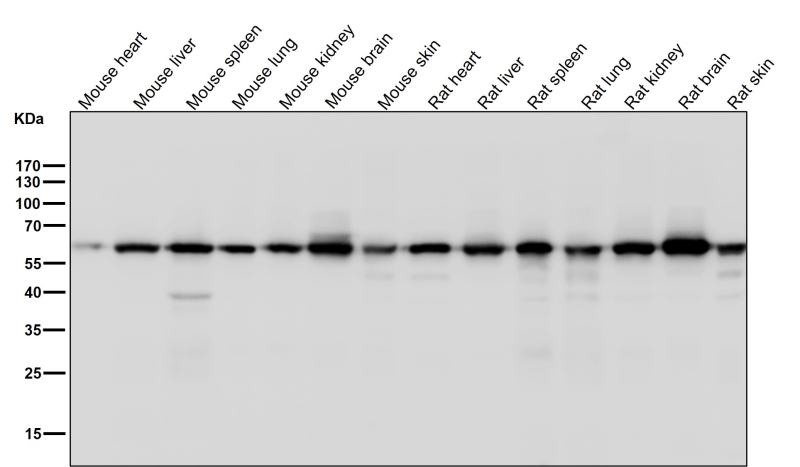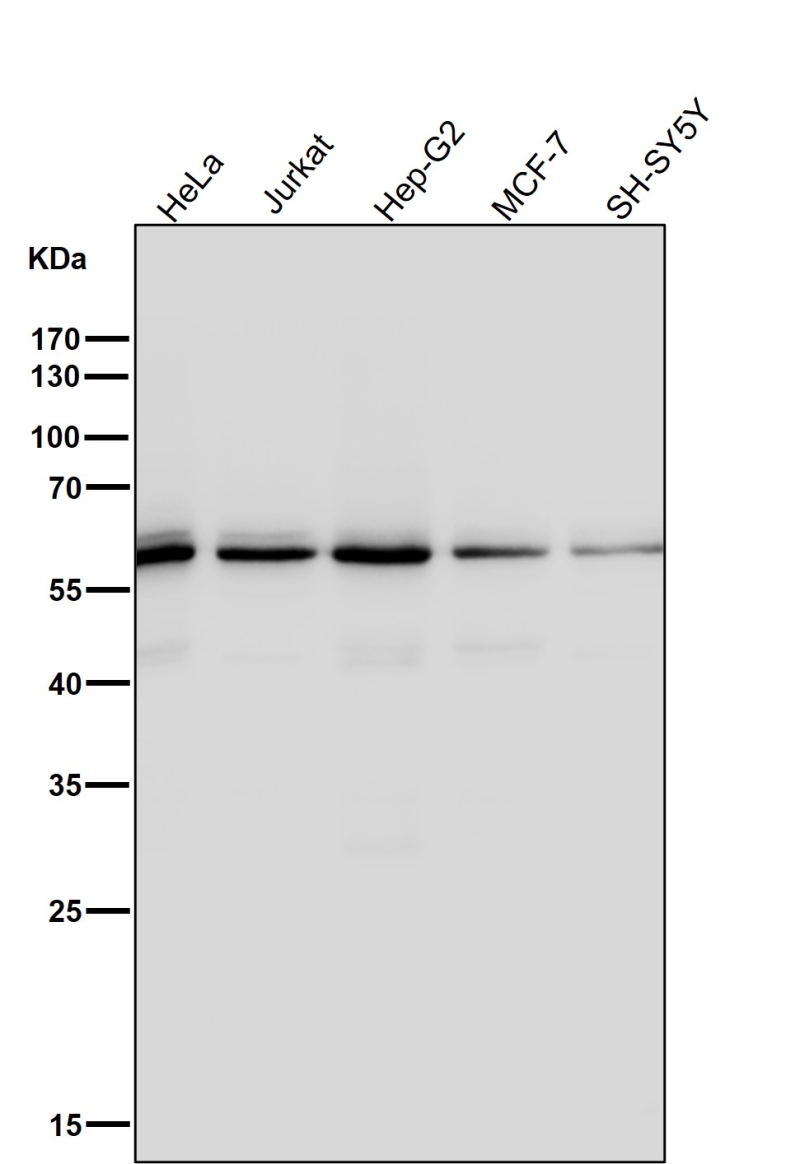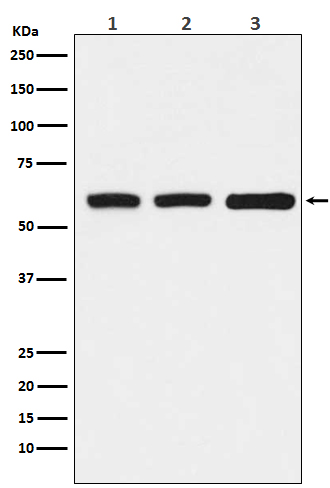


| WB | 咨询技术 | Human,Mouse,Rat |
| IF | 1/20-1/50 | Human,Mouse,Rat |
| IHC | 咨询技术 | Human,Mouse,Rat |
| ICC | 1/50-1/200 | Human,Mouse,Rat |
| FCM | 咨询技术 | Human,Mouse,Rat |
| Elisa | 咨询技术 | Human,Mouse,Rat |
| Aliases | Elongation protein 3 homolog; elp3; hELP3; Kat9;;ELP3 |
| WB Predicted band size | 62 kDa |
| Host/Isotype | Rabbit IgG |
| Antibody Type | Primary antibody |
| Storage | Store at 4°C short term. Aliquot and store at -20°C long term. Avoid freeze/thaw cycles. |
| Species Reactivity | Human,Mouse,Rat |
| Immunogen | A synthesized peptide derived from human ELP3 |
| Formulation | Purified antibody in PBS with 0.05% sodium azide,0.05% BSA and 50% glycerol. |
+ +
以下是关于KAT9/Elp3抗体的3篇参考文献,包含文献名称、作者及摘要概括:
1. **"Elp3 links tRNA modification to IRES-dependent translation of cellular mRNAs"**
*作者:Selvadurai et al. (2018)*
摘要:研究报道Elp3(酵母KAT9同源蛋白)通过调控tRNA修饰影响核糖体对特定mRNA IRES元件的识别,抗体用于验证Elp3在翻译调控中的作用及蛋白表达水平。
2. **"The Elongator complex interacts with PCNA and modulates transcriptional silencing and sensitivity to DNA damage"**
*作者:Li et al. (2009)*
摘要:揭示Elp3作为Elongator复合物催化亚基,通过乙酰化组蛋白H3调控转录沉默和DNA损伤应答,研究中Elp3抗体用于ChIP实验证实其与靶基因启动子的结合。
3. **"KAT9/ELP3 is required for acetylation of histones and transcriptional activation in Drosophila"**
*作者:Wang et al. (2013)*
摘要:在果蝇模型中证明KAT9/Elp3通过乙酰化组蛋白H3K9激活发育相关基因,抗体用于免疫荧光定位及Western blot验证其在染色质重塑中的功能。
The KAT9/Elp3 antibody targets Elongator complex subunit 3 (Elp3), a multifunctional protein involved in transcriptional regulation and tRNA modification. Elp3. also known as KAT9 (lysine acetyltransferase 9), is a catalytic subunit of the evolutionarily conserved Elongator complex, which plays roles in transcriptional elongation, histone modification, and neurodevelopment. Structurally, Elp3 contains a radical S-adenosylmethionine (SAM) domain and a lysine acetyltransferase (KAT) domain, enabling its dual enzymatic activity in acetylating histone H3 (primarily at lysine 14) and participating in tRNA wobble uridine modifications.
Antibodies against Elp3 are widely used to study its role in epigenetic regulation, neuronal function, and diseases. Dysregulation of Elp3 has been linked to neurodevelopmental disorders, amyotrophic lateral sclerosis (ALS), and cancer. In research, Elp3 antibodies are employed in techniques like chromatin immunoprecipitation (ChIP), Western blotting (WB), and immunofluorescence (IF) to investigate its interaction with chromatin, subcellular localization, and expression levels. Notably, Elp3's acetyltransferase activity is crucial for acetylation of α-tubulin and other non-histone proteins, impacting cytoskeletal dynamics and cellular signaling. Studies using Elp3 antibodies have also clarified its involvement in stress responses, DNA damage repair, and metabolic pathways. Commercial Elp3 antibodies are typically validated for specificity in model organisms, including humans, mice, and Drosophila, facilitating cross-species mechanistic studies.
×